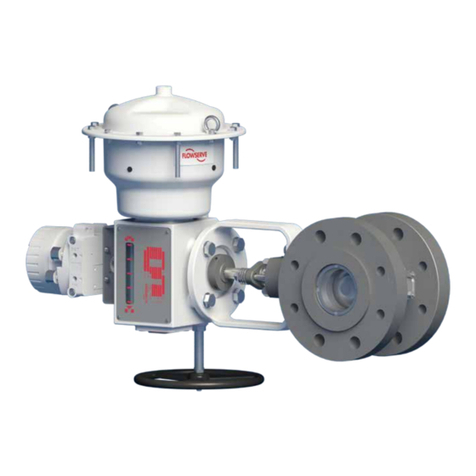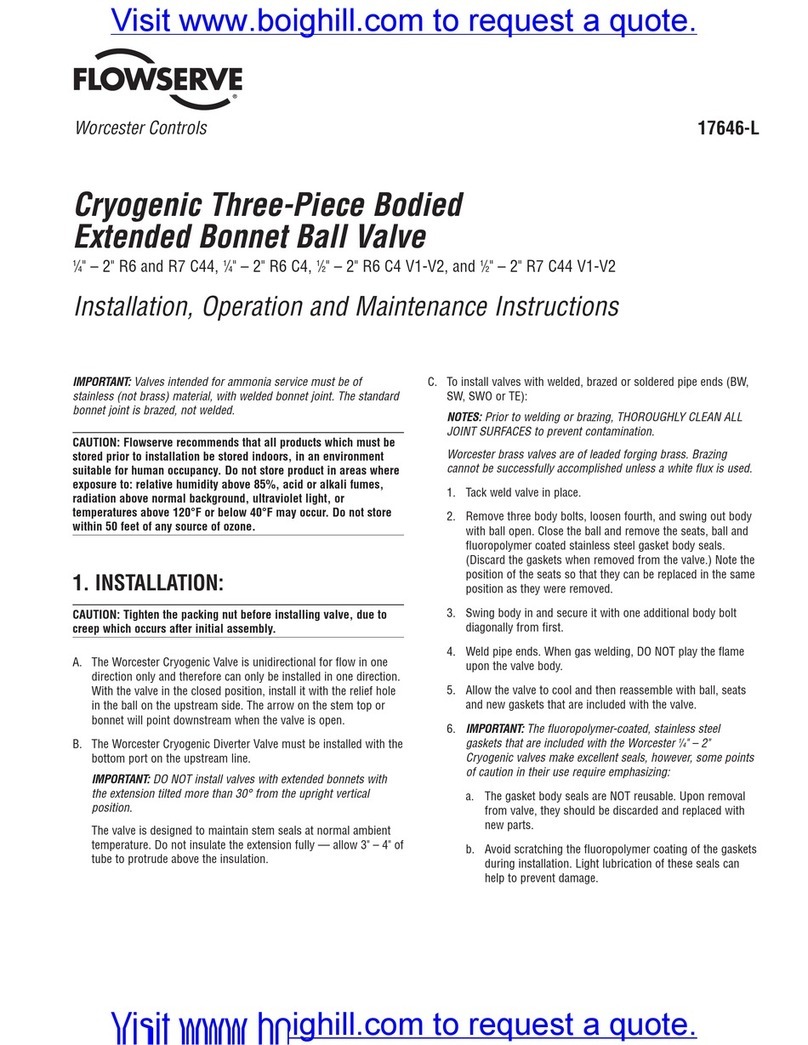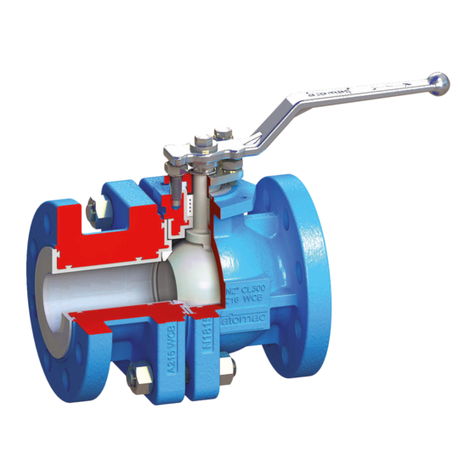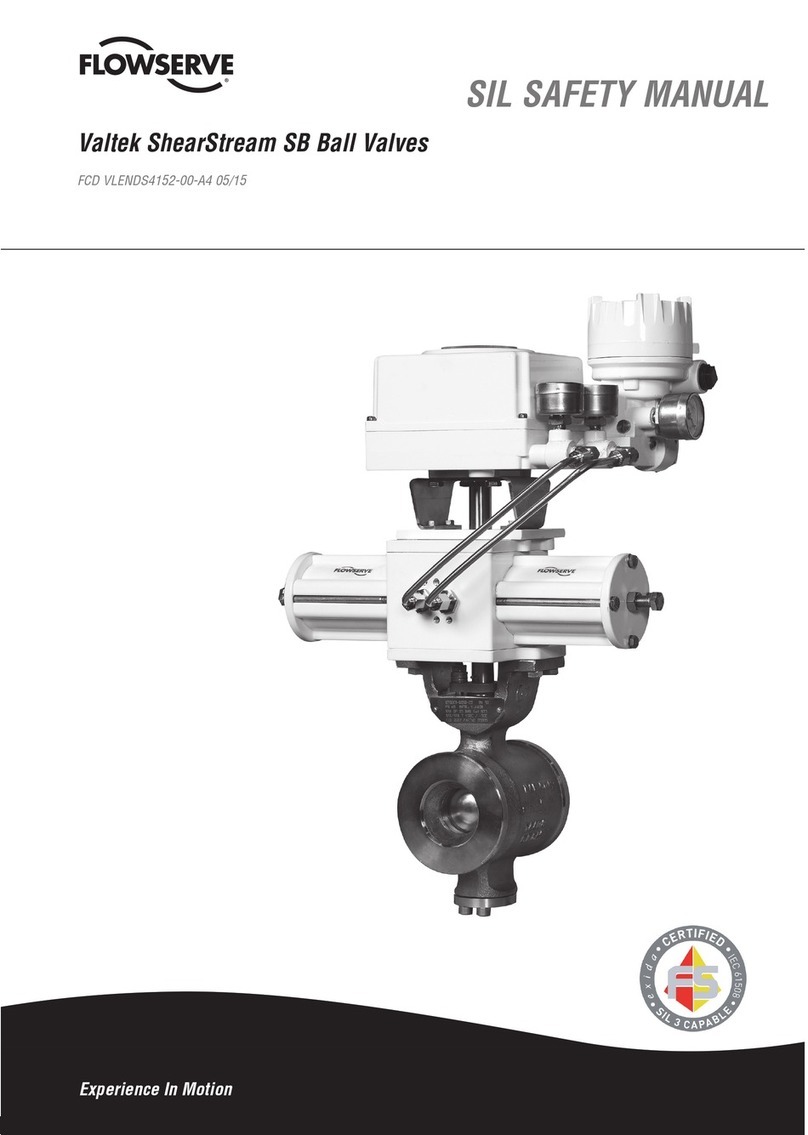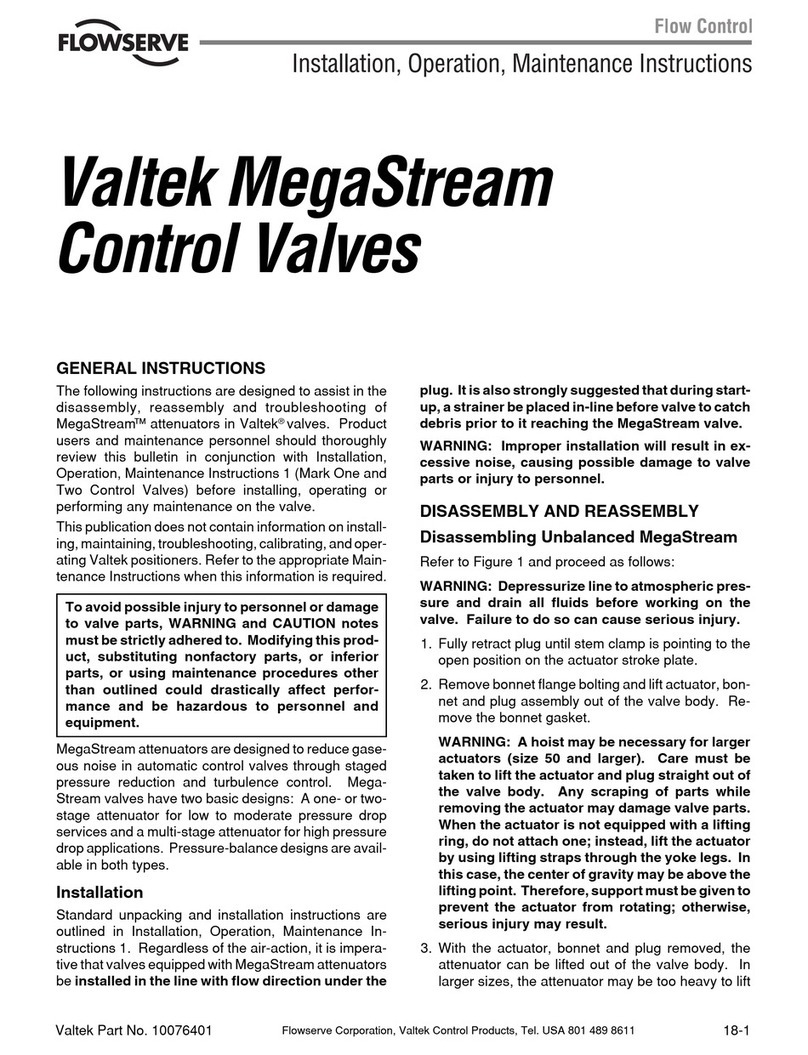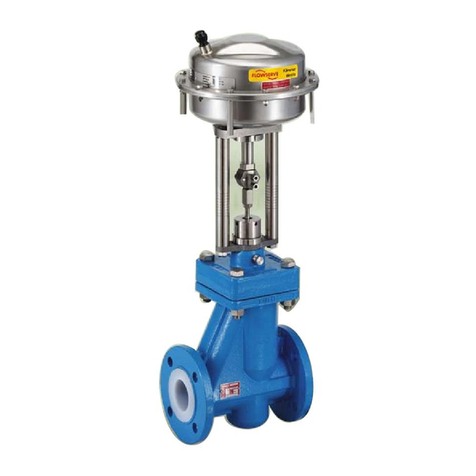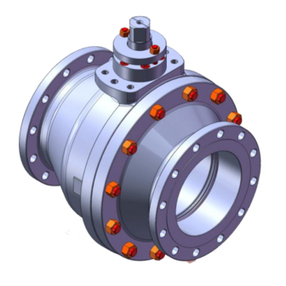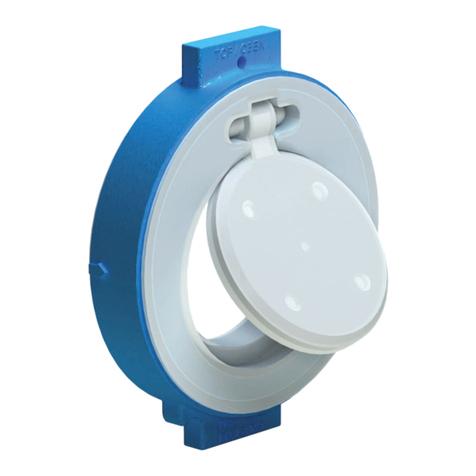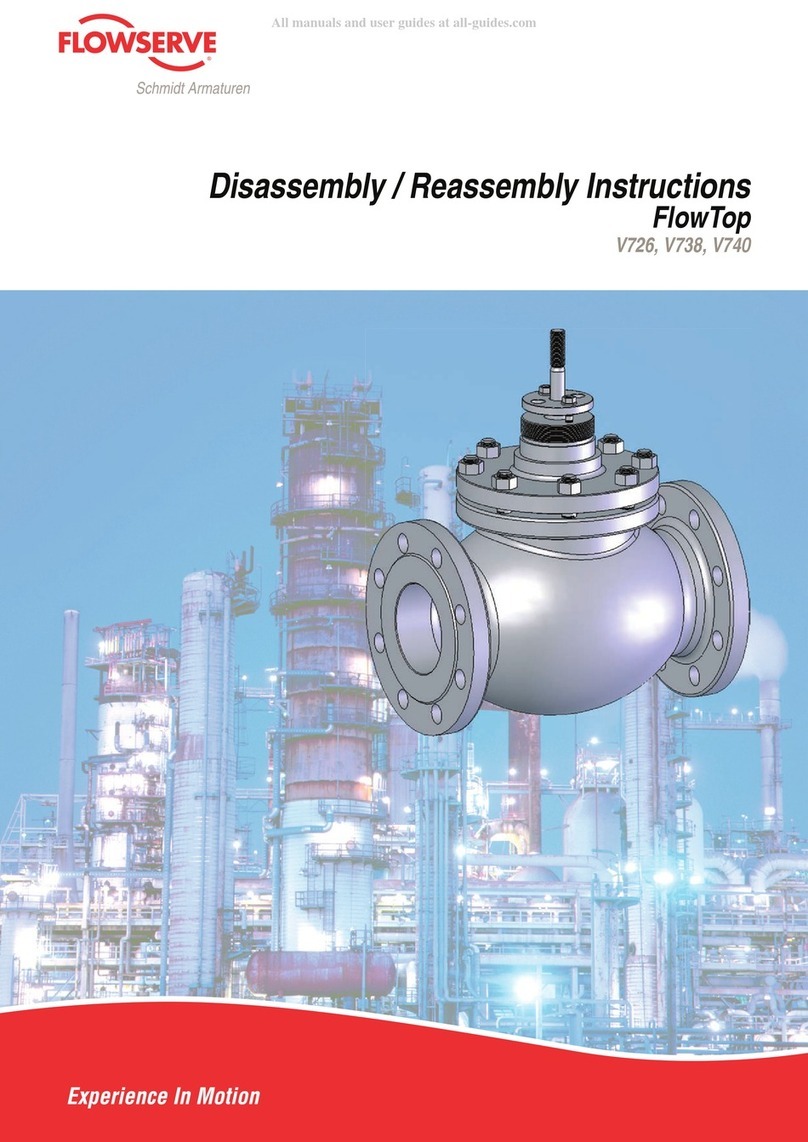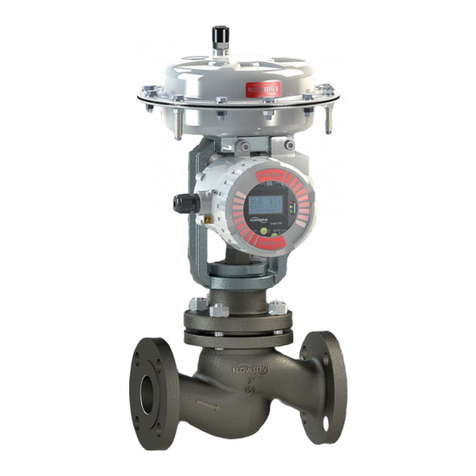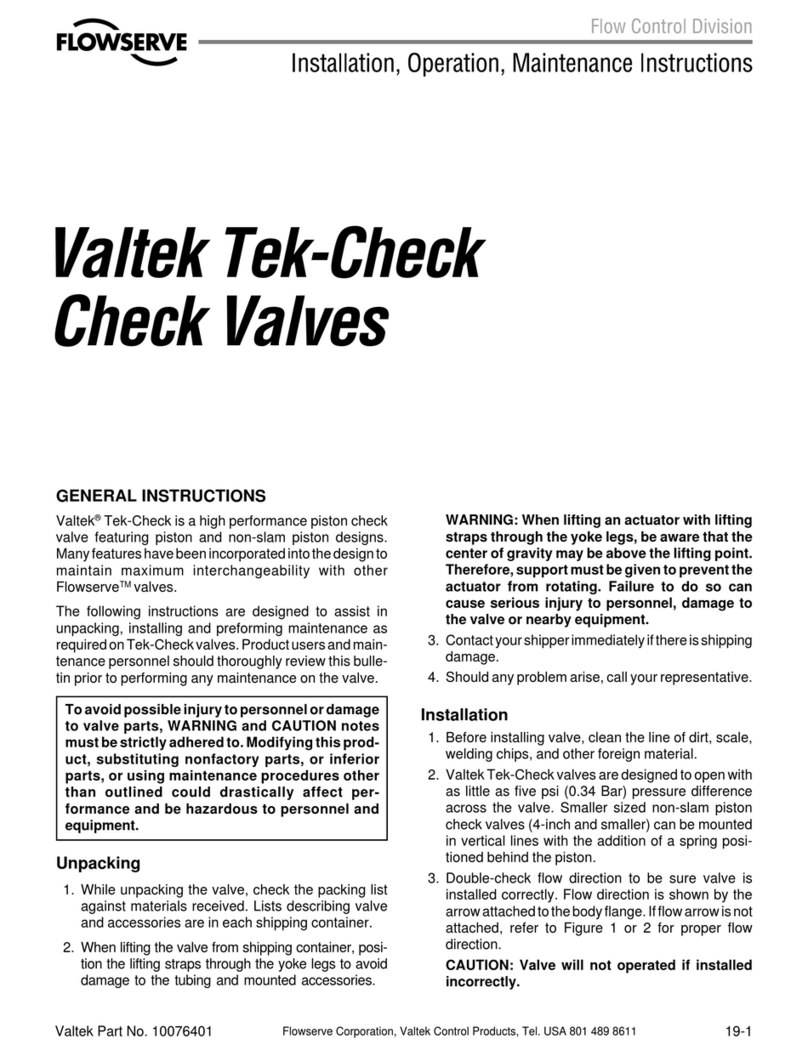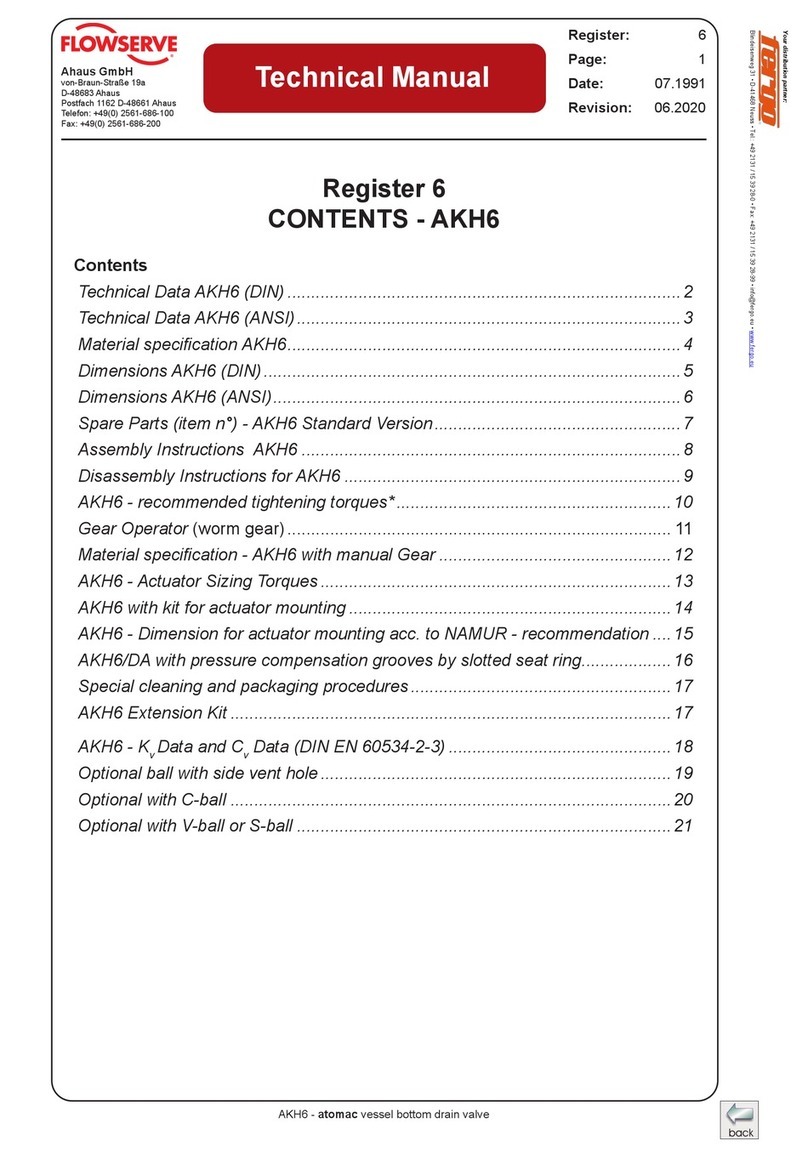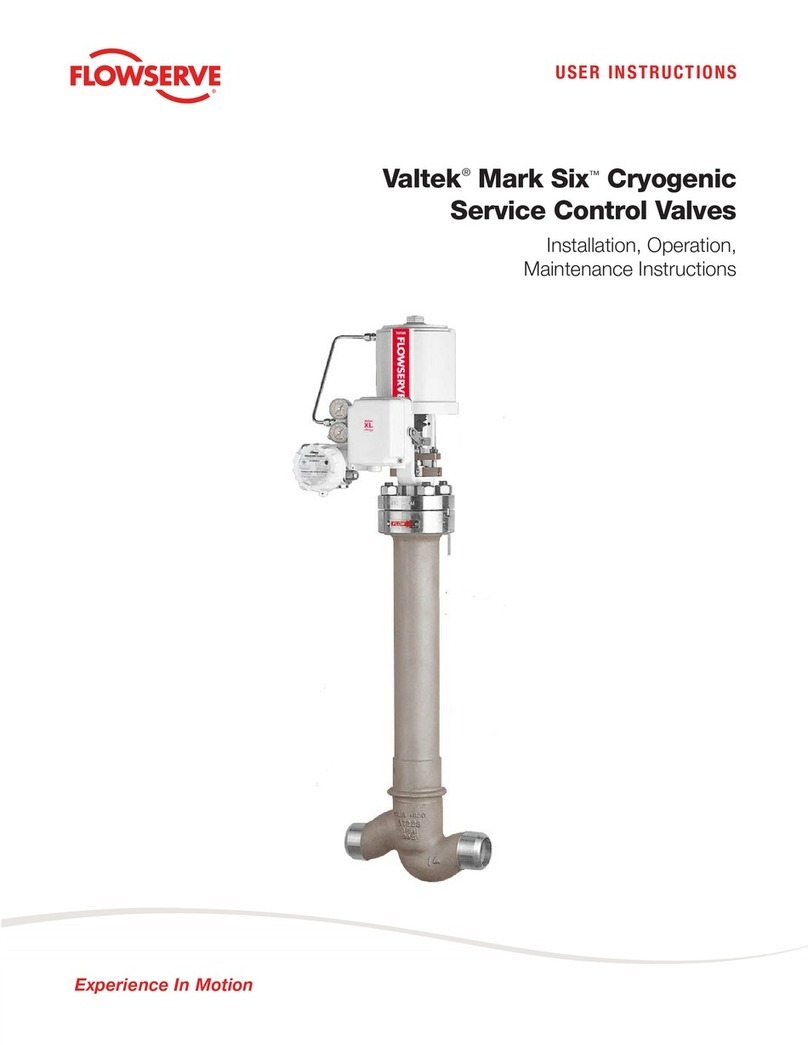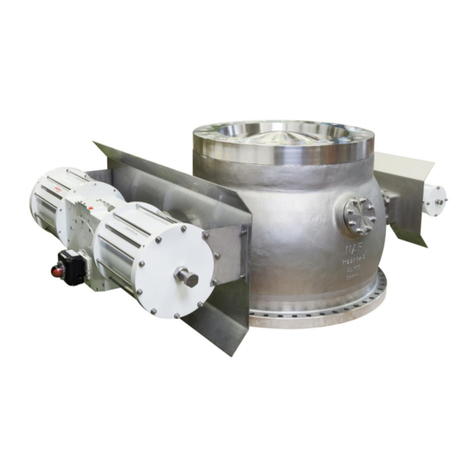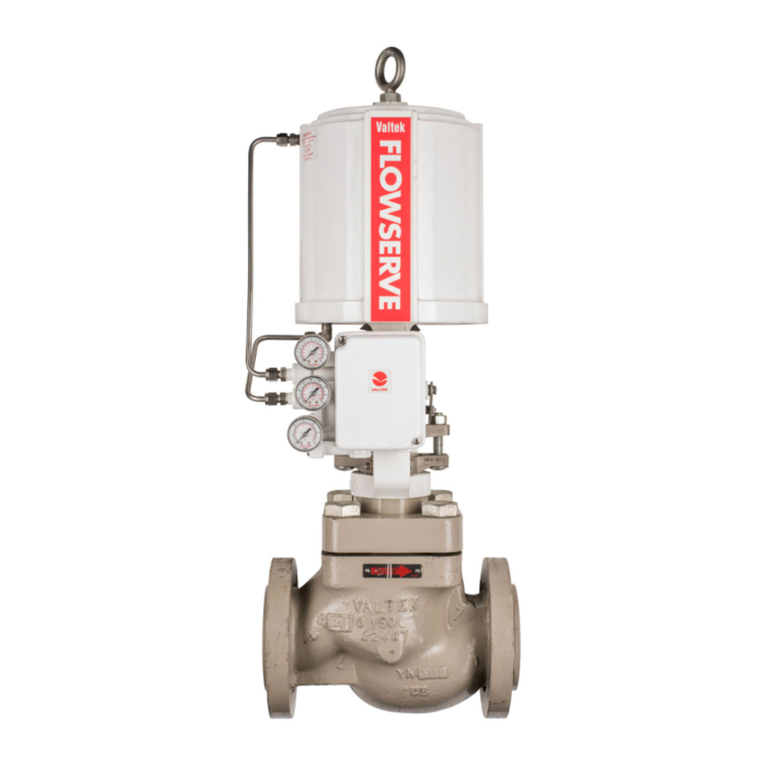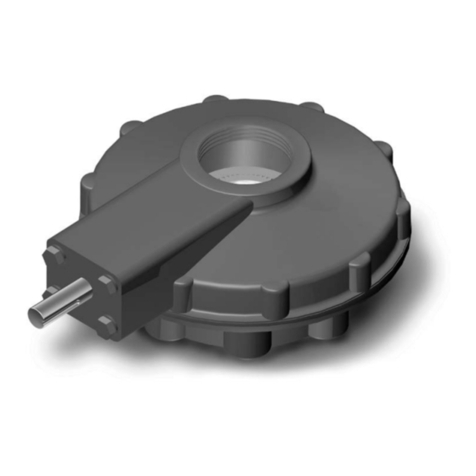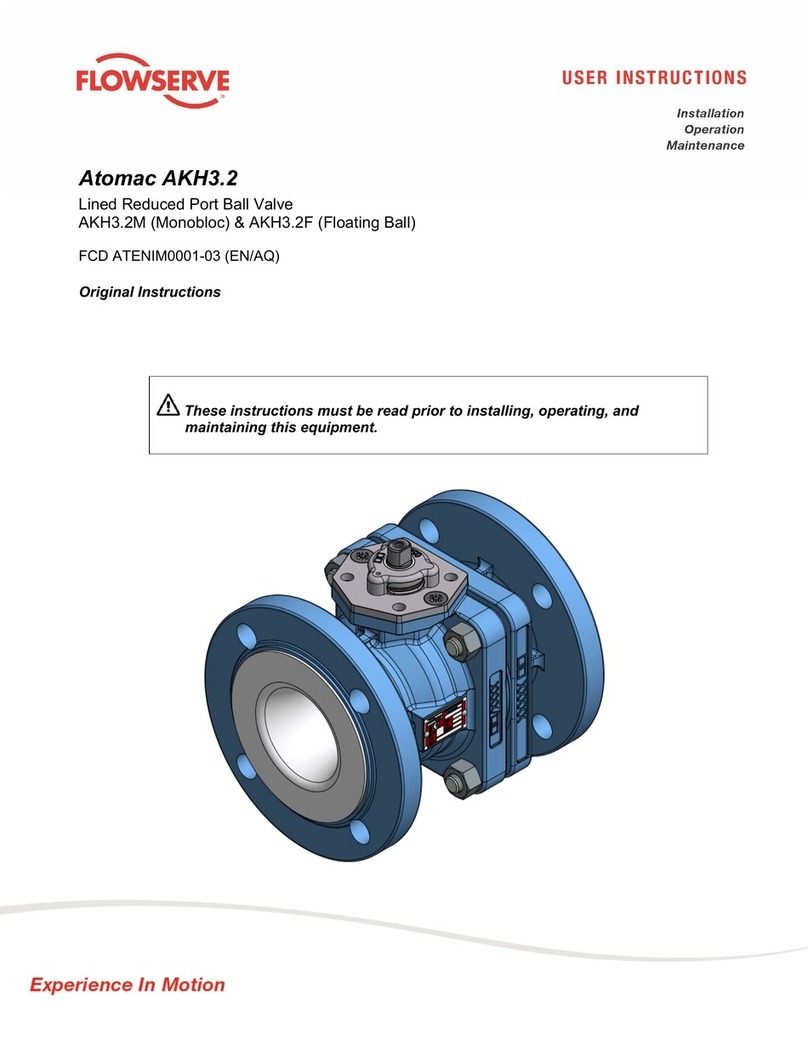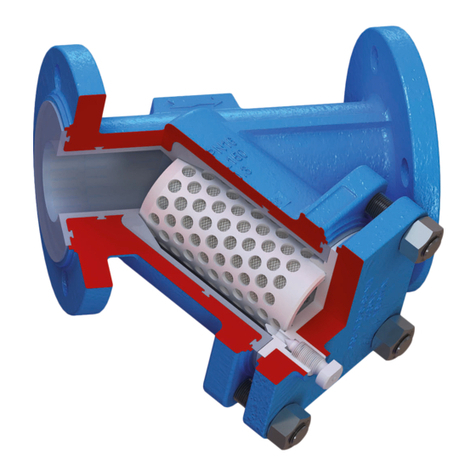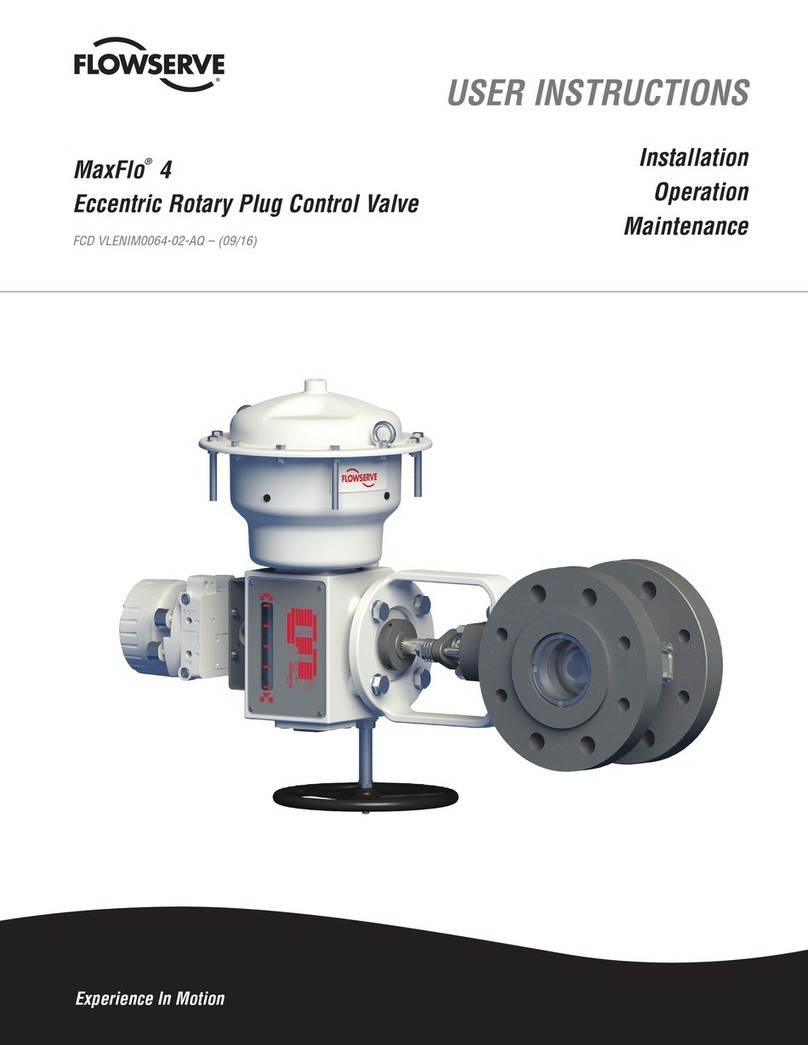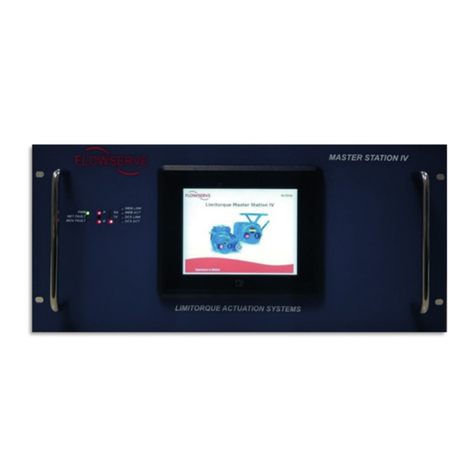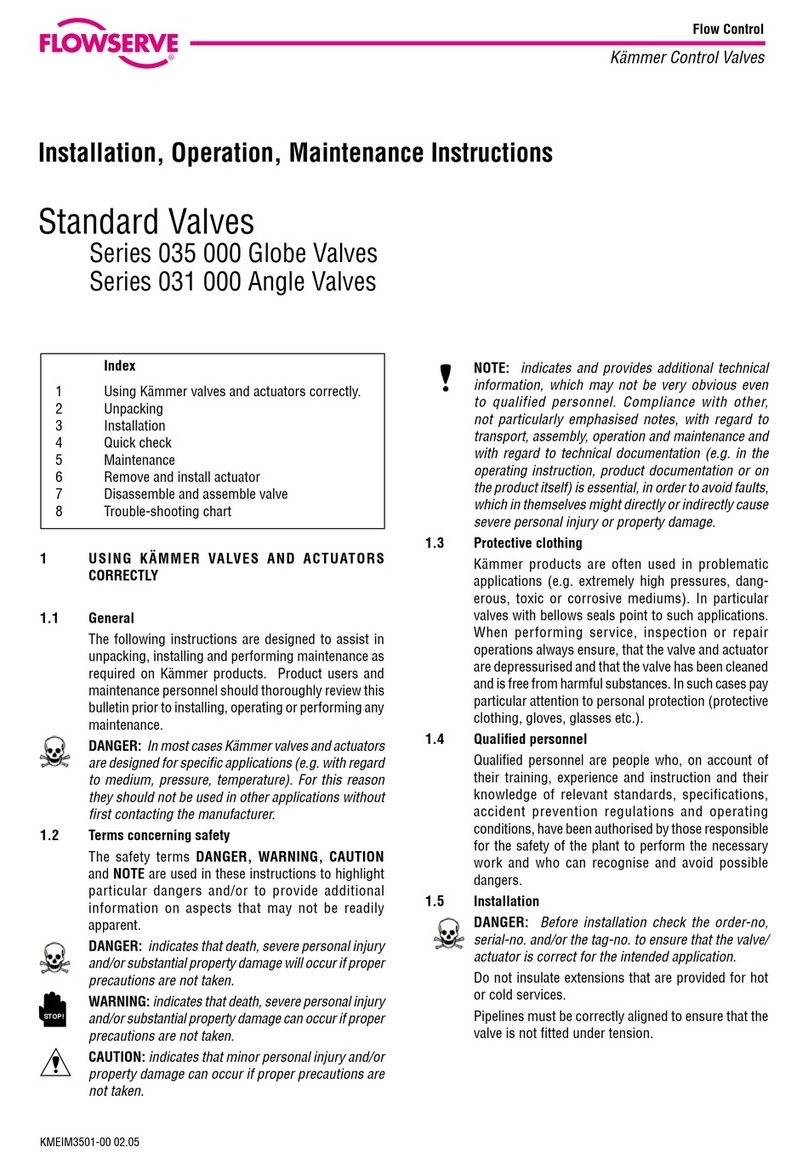
10-2
WARNING: Keep hands, hair, clothing, etc.
away from the rotating disc and the seat when
operating the valve. Failure to do so could
cause serious injury.
CAUTION: Because of Valdisk’s self-centering
seat,thereisno reason to openthevalveatany
time during installation. Therefore, the valve
should remain closed until the valve is fully
installed.
4. Connect air supply and instrument signal. Throt-
tling valves are usually equipped with valve
positioners.Twoconnectionsaremarkedfortheair
supplyand forthe instrumentsignal. Both cylinder
andpositioneraresuitablefor150psiairsupply.An
air regulator is not required unless the supply
pressure exceeds 150 psi. An air filter is recom-
mended unless the supply air is unusually clean
and dry. All connections must be free of leaks.
CAUTION: On valves equipped with air filters,
the air filter bowl must point down; otherwise,
the air filter will not perform properly.
NOTE: In some rare cases, the air supply must be
limited to 100 psi rather than 150 psi. In this case,
a sticker found near the upper air port on the
cylinderwillindicatethisandanairregulatorshould
be installed to insure the supply pressure does not
exceed 100 psi.
5. Make sure proper clearance exists internally in the
mating piping to permit proper disc rotation.
6. Apply recommended torque values to line flange
bolting for proper sealing (see Table I).
Quick-check
Prior to start-up, check the control valve by following
these steps:
1. Check for full stroke by making the appropriate in-
strument signal change. Observe disc position
indicator plate mounted on the transfer case. The
disc should change position in a smooth, rotary
fashion.
2. Check all air connections for leaks. Tighten or
replace any leaky lines.
3. Evenly tighten the packing nuts to slightly over
finger-tight.
CAUTION: Do not overtighten packing. This
can cause excessive packing wear and high
shaftfriction, whichmayimpede shaftrotation.
After the valve has been in operation for a short
time,checkthe packingnutstomake suretheyare
just over finger-tight (readjust if necessary). If
packing box leaking occurs, tighten the packing
nuts only enough to stop leakage.
4. To observe the valve failure mode in case of air
failure,positionthevalvetomid-strokeandshutoff
Table I: Flange Bolting Torques
Valve Rating Torque
Size (inches) (ft./lbs.)
150 118
2 300 118
600 118
150 118
3 300 209
600 209
150 118
4 300 209
600 337
150 209
6 300 209
600 505
150 209
8 300 337
600 728
10 150 337
300 505
12 150 337
300 728
14 150 505
16 150 505
18 150 728
20 150 728
24 150 1009
30 150 1009
Installation
1. Before installing the valve, clean the line of dirt,
scale, welding chips, and other foreign material.
Clean the gasket surfaces thoroughly to insure
leak-proof joints.
2. Check flow direction to be sure valve is installed
correctly. Fail-closed valves should be installed
with the shaft upstream only on gas service. It
is preferred that liquid service valves must be
installed with the shaft downstream regardless of
air failure action. However, under certain flow
conditionsthevalvecanflowshaftupstream. Con-
sult factory if the valve must be mounted with the
shaft upstream in liquid service. Fail-open valves
should be installed with the shaft downstream.
WARNING: When installing the valve in-line
between flanges, make certain the flange face
gasket covers both seat retainer and body and
surface. Failure to do so will cause excessive
leakagedownstream.Referto“SeatInsert/Snap-
ring Configuration” in Figure 1.
3. Fullyclosethevalvebeforeandduring the installa-
tion process.
